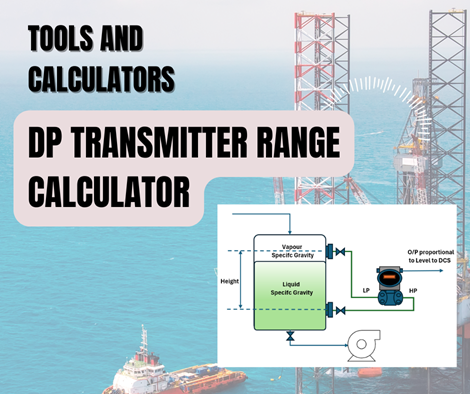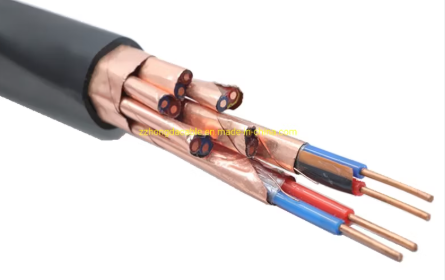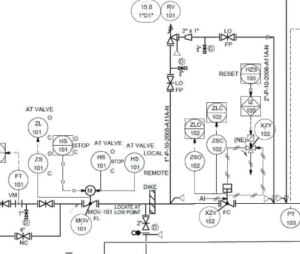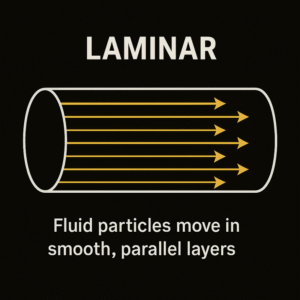Recent Updates
DP Level Transmitter Range Calculator DP Level Transmitter Range Calculator Select Tank Type: Open TankClosed Tank (Dry Leg)Closed Tank (Wet Leg / Suppression) Measurement Range (H): The distance from the 0% level to the 100% level (in mm). Process Fluid Specific Gravity (S.G.): The specific gravity of the liquid being...
Cable Conductor Size Calculator Cable Conductor Size Calculator Current (A): Distance (One-way, meters): Voltage (V): Voltage Drop (%) Allowed: Phase: Single PhaseThree Phase Conductor Material: Copper (0.0175 Ω·mm²/m)Aluminium (0.0282 Ω·mm²/m) Calculate Conductor Size...
How to Read P&IDs for Flow Instruments: A Complete Guide (2025) In the intricate world of process industries, from sprawling chemical plants to the precise operations of a pharmaceutical facility, maintaining control over fluid flow is paramount. The roadmap to understanding and managing this critical aspect of any process lies...
A Student’s Guide to Understanding Reynolds Number: From Smooth Streams to Turbulent Chaos Ever wondered why smoke from a candle rises in a smooth, elegant plume before bursting into a chaotic, swirling mess? Or why a golf ball has dimples? The answer to these seemingly unrelated questions lies in a...
Have you ever marveled at the effortless glide of an airplane, the deceptive curve of a spinning baseball, or even the simple act of a perfume atomizer producing a fine mist? These seemingly disparate phenomena are all governed by a fundamental concept in physics known as Bernoulli’s Principle. It’s a...
Introduction:In the study of fluid mechanics, understanding flow behavior is critical. One of the most important concepts in this field is the Reynolds Number. Whether you’re studying engineering, physics, or fluid dynamics, this number plays a crucial role in determining the flow regime of fluids, helping us understand whether the...
Comprehensive Guide to Laminar vs. Turbulent Flow Fluid Dynamics 101 Laminar Flow Turbulent Flow Calculator Implications Quiz Laminar vs. Turbulent Flow An In-Depth Guide for Instrumentation Students In the world of fluid dynamics, understanding the difference between laminar and turbulent flow is essential for instrumentation engineers, particularly those working in...
Understanding Flow Rate: Volumetric vs. Mass Flow In the world of fluid dynamics and process engineering, understanding flow rate is fundamental for designing, operating, and optimizing systems that deal with gases and liquids. Flow rate is a crucial parameter in several industries, including oil and gas, chemical, water treatment, pharmaceuticals...
Flow measurement is a critical part of numerous industries, from oil and gas to water treatment and food production. It helps monitor, control, and optimize processes, ensuring quality, efficiency, and compliance with regulatory standards. Whether you’re an engineer, technician, or a curious learner, understanding flow measurement is essential for success...





